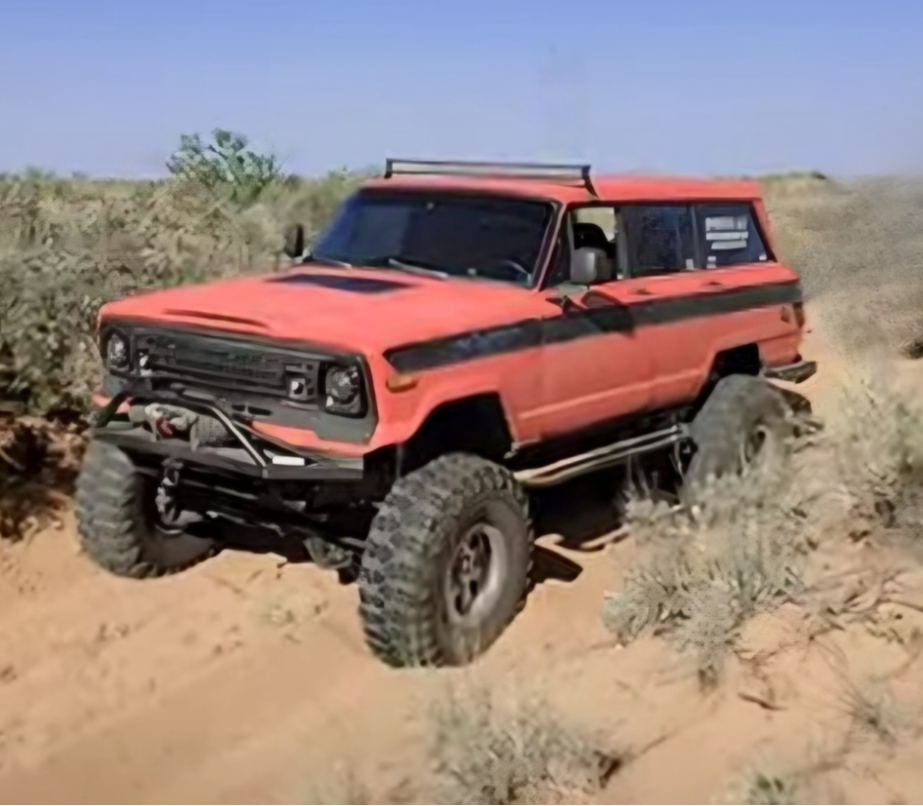Embarking on a long off-road expedition can be a thrilling adventure, but it also presents its share of challenges. The allure of remote landscapes and untouched nature is undeniable, yet the risks of getting stuck or encountering obstacles remain ever-present. Proper planning for off-road recovery, including the use of essential tools like a soft shackle, is crucial to navigate these challenges and ensure a safe return home. Whether you're a seasoned off-roader or new to the adventure, this guide will help you plan effectively for off-road recovery on long expeditions.

How to Plan for Off-Road Recovery on Long Expeditions
Understand the Terrain and Conditions
The first step in planning is to thoroughly understand the terrain and environmental conditions you’ll be facing. Different terrains require different recovery strategies and equipment. For instance, rocky terrain may demand a winch and heavy-duty recovery gear, while muddy or sandy areas might require traction boards and shovels.
Before setting out, research the area you'll be traveling through. Consider the weather conditions, as rain can turn a passable trail into a mud pit, and snow can make recovery even more complex. Knowing the terrain and conditions in advance allows you to pack the appropriate recovery tools and develop a plan tailored to the environment you'll encounter.
Build a Comprehensive Recovery Kit
Your recovery kit is your lifeline when things go wrong off-road. A well-stocked kit should include essential tools that cover a variety of scenarios. Here's a basic list of items every off-road recovery kit should contain:
- Winch with Synthetic Winchline: A reliable winch is often the most effective tool for getting out of tricky situations. Make sure it has the capacity to handle your vehicle’s weight.
- Recovery Ropes: These are essential for pulling your vehicle out of mud, sand, or snow. Opt for high-quality straps with reinforced stitching.
- Snatch Blocks: These tools are crucial for winching and can help you navigate difficult angles during recovery.
- Traction Boards: These can provide the grip needed to get your vehicle moving again on soft or slippery surfaces.
- Shovel: A sturdy shovel is indispensable for digging out your tires or clearing obstacles.
- Hi-Lift Jack: This versatile tool can lift your vehicle in tough spots and assist with tire changes.
- Tire Repair Kit: Flat tires are common on rough terrain, so a repair kit is a must.
- Air Compressor: After adjusting tire pressure for certain terrains, you’ll need to inflate them back to their proper levels.
Practice Recovery Techniques Before You Go
It's not enough to have the right tools; you need to know how to use them. Practice different recovery techniques in a controlled environment before heading out on your expedition. This could involve using your winch, attaching recovery straps, or deploying traction boards.
Understanding the basics of off-road recovery will boost your confidence and make you more efficient when the time comes to use these techniques in the field. Practicing also helps you identify any gaps in your recovery kit or skills before you’re in a critical situation.

Plan for Communication and Assistance
One of the biggest challenges of off-road expeditions is staying connected in remote areas. Cell service is often unreliable, so it’s essential to have a communication plan in place. Consider investing
in a satellite phone or a personal locator beacon (PLB) that can send emergency signals even when you’re off the grid.
Additionally, share your travel plans with someone back home. Provide them with a detailed itinerary, including your expected route, and check-in times. This ensures that if something goes wrong and you can’t communicate, help will know where to start looking.
If possible, travel with a group. Having multiple vehicles means more recovery options if one vehicle gets stuck. Plus, the extra hands can make the recovery process quicker and safer.
Know Your Vehicle’s Limits
Pushing your vehicle beyond its capabilities is a common cause of trouble during off-road expeditions. Know your vehicle’s limits in terms of clearance, weight, and traction. Familiarize yourself with its strengths and weaknesses in different terrains.
Avoid overloading your vehicle with unnecessary gear, as extra weight can hinder your off-road performance and make recovery more difficult. Keep your vehicle well-maintained, checking critical systems like brakes, suspension, and tires before departure.
Prepare for the Unexpected
Even with the best planning, off-road expeditions can be unpredictable. Prepare for the unexpected by packing extra food, water, and emergency supplies. A first aid kit is essential, as is knowing basic first aid techniques.
It's also wise to carry spare parts for your vehicle, such as belts, hoses, and fuses, along with the tools needed to make basic repairs. Being prepared for mechanical issues can mean the difference between getting back on the road quickly or being stranded for an extended period.
Adapt and Stay Calm
In a recovery situation, remaining calm and adapting to the circumstances is crucial. Assess the situation carefully before taking action. Rushing the recovery process can lead to mistakes or even make the situation worse. Use the knowledge and tools you’ve prepared to find the best solution.
Conclusion
Long off-road expeditions are exhilarating adventures that offer the chance to explore remote and beautiful places. However, they also come with risks, especially when it comes to getting stuck or facing mechanical issues. By understanding the terrain, building a comprehensive recovery kit, practicing recovery techniques, and preparing for the unexpected, you can ensure that you’re ready for whatever challenges come your way. Proper planning not only enhances your safety but also ensures that your expedition is a success, allowing you to enjoy the journey with peace of mind.
